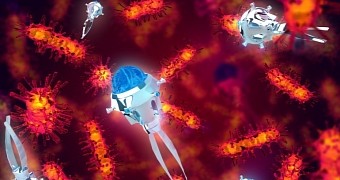Tiny robots measured in the nanometers have been quite popular in science fiction lately, since they can basically do anything, both to machines and to living organisms.
I didn't really expect them to be successfully used in delivering medicine though. Not any time soon. But here we are.
Researchers working at the University of California, San Diego, have successfully used microscopic machines to deliver a medical load inside a living creature. And yes, it was done without any side effects.
The robots were micro-motor powered nanobots. While the nanites carried the medicine, the motors were larger, shaped like small tubes 20 nm in length and 5 micrometers in diameter.
They used gas bubbles to propel themselves, gas resulting from a reaction with the contents of the stomach in which they were deposited.
The test subject was a live mouse by the way, and it was alive and kicking afterwards, no issues. For a while.
The speed was of “only” 60 micrometers per second, which meant that it took a while for the micro-motor powered nanobots to reach the stomach lining and embed themselves there, where they stayed for 12 hours.
Once done, they dissolved and released the nanoparticle compound into the gut tissue.
Eventually, the mouse was euthanized and dissected, revealing that the nanobots had caused no rise in toxicity or tissue damage. This is owed to the main material they were made of: zinc, which is technically a nutrient.
The devices will probably have to use different propulsion for intravenous applications (gas bubbles + blood = horrible things), but the breakthrough is massive regardless.

 14 DAY TRIAL //
14 DAY TRIAL //